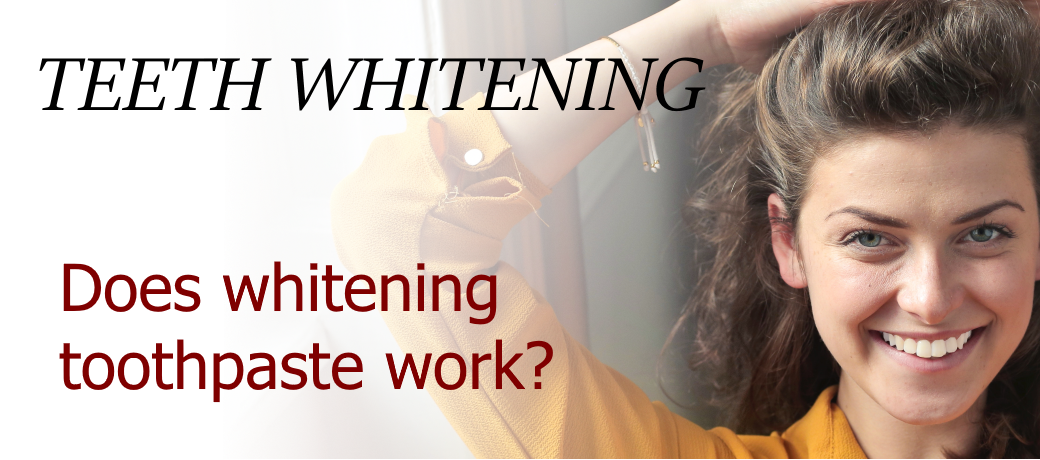
Having a nice, bright smile can improve your appearance, make you more approachable, and improve your confidence levels. But what if your smile isn’t naturally white? Even healthy, well-cared-for teeth are susceptible to staining and usually darken over time. If that’s the case, you may be considering whitening toothpaste.
But will it really work? If your teeth have a naturally yellowish hue, whitening toothpaste won’t solve that problem. What they can do is remove surface stains on teeth that result from eating certain foods and consuming some drinks such as coffee and tea. Any smoking will also cause surface stains. Whitening toothpastes are ineffective for deeper internal discoloration.
That doesn’t mean teeth whitening toothpaste doesn’t have some cosmetic benefits. Whitening toothpaste uses special abrasives that gently polish the teeth. This adds luster to your smile and will help to break down and remove stains. If used twice a day, your smile will appear brighter after two to six weeks of use.
Some brands may contain ingredients that may cause or worsen sensitivity in some people. As a precaution, it is recommended you consult with your dentist or dental hygienist before using any whitening products to whiten your teeth.
Others swear by whitening toothpaste that contains activated charcoal. Many believe charcoal binds to harmful substances in your mouth, such as tartar, bacteria, and stains. However, this type of toothpaste doesn’t necessarily work better than others, and prolonged use may be too abrasive to tooth enamel.
Is one product that much better than the other? Trendy solutions for age-old problems are commonplace, so it’s always best to do a little research before going all-in on a product. For example, fluoride-free whitening toothpaste could help your breath smell minty but does nothing to prevent tooth decay or gum disease.
In some cases, it might make sense to consult with a dentist to find out why your teeth aren’t as white as you’d like them. Some of the main culprits are poor tooth care, drinking too much coffee, and smoking. But there are other causes that are out of our control, such as the normal aging process, genetics, trauma, and certain diseases.
With any dental product, look for a seal of approval from the American Dental Association or other reputable organization.
Other tooth whitening options
If you are currently using tooth whitening toothpaste, but are unhappy with the results, schedule a visit with Creekside Dental. We can discuss other options that work to give you a whiter smile. We can also discuss any other cosmetic dental questions you may have.
Bonding
Tooth bonding can serve two purposes: altering the shape or look of a broken or decaying tooth as well as changing the color. It’s a fairly straightforward solution to an often embarrassing problem in that composite material is bonded to the tooth and shaped to match other teeth as well as making the tooth appear whiter.
Veneers
Another conservative approach to tooth care, veneers are thin pieces of ceramic material that are bonded to a tooth. These veneers are used to improve the shape of a tooth, the coloring of a tooth, and last for years. Not all patients are candidates for veneers, so a discussion with your dentist is the best way to determine if they may be right for your situation.
Whitening Trays
Applied with custom fitting trays, a bleaching gel is applied to the teeth for varying amounts of time to lighten the shade of the teeth. This is done under the supervision of a dentist, and the trays are made from impressions made in the dental office. This method will be more effective and longer-lasting than any whitening toothpaste or strips that can be purchased in a store or online.

